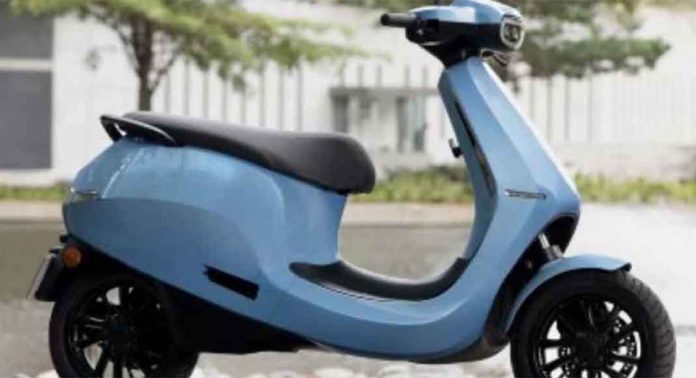On the 75th anniversary of India’s independence, OLA Electric launched its first offerings, the S1 and S1 Pro, in Bengaluru, symbolising emancipation from petrol-related difficulties, a personal objective for entrepreneur Bhavish Aggarwal.
Both scooters will serve as the new industry benchmark, featuring “the best design, the best tech, and the best performance” on any e-scooter in the world, according to Aggarwal. Both scooters will be launched at a price of Rs 99,999 for the S1 and Rs 1,29,999 for the more powerful and long-range S1 Pro.
The prices now include FAME II subsidies but exclude individual state subsidies, which will significantly reduce the prices. The price of the Ola S1 drops to Rs 79,999 when the Gujarat state subsidy is applied (on-road). Similarly, the Delhi subsidy reduces the price to Rs 85,099, while Maharashtra’s subsidy proposal, once ratified, will reduce the price to around Rs 89,999.
While the scooters on display at the event are pre-production models, they do include some of the same colour schemes as the production versions, which will be available for online order on September 8th, with delivery beginning in October.
While the S1 has five colour schemes, the S1 Pro has ten, five of which have a metallic appearance. Ola Electric plans to make the scooters available in 1000 cities across India at the same time, rather than taking the phase-by-phase method used by competitors who introduced e-scooters in prominent markets, such as Tier 1 cities.
Performance and Strength
Both scooters have the same design and an electric motor that produces 8.5 kW of peak power. While the S1 has a 2.9 kWh battery, the S1 Pro has a 3.9 kWh battery that gives it a claimed range of 181 kilometres, according to the government-approved India Drive Cycle (IDC) range-testing procedure. While the S1 has a top speed of 90 kph, the S1 Pro has a top speed of 115 kph, making it the world’s fastest electric scooter, according to the company.
Aside from the regular ‘Normal’ and ‘Sport’ riding modes on both scooters, the S1 Pro gets a ‘Hyper’ riding mode that unleashes the scooter’s unrestrained accelerative prowess, propelling the S1 Pro from 0-60 kph in a remarkable 5 seconds, according to the manufacturer. The Ola S1 isn’t far behind, clocking 60 kph in under seven seconds.
A ‘Reverse mode’ and ‘Hill Hold’ feature, the latter automatically recognising sloping surfaces and holding the scooter in place without the need for the rider to engage the brake or hold the scooter in place with their feet, is another in a succession of ground-breaking features.
The ‘Reverse mode’ isn’t just absent from all electric scooters; it’s also absent from most high-end motorbikes, some of which weigh over 300 kg (cruiser, bagger-style motorcycles). The Honda Goldwing, a luxury touring bike with a starting price of Rs 37.2 lakh (ex-showroom) in India, is the only conventional ICE motorcycle to offer reverse gear.
Features of the Software
Aggarwal, who has stated unequivocally that the Ola Scooter is not only the best electric scooter, but also the “best scooter in the world,” is backing it up with industry-first software features. To begin with, the manufacturer has stated that the scooter is totally keyless, with no key inlet or key fob. It can instead be opened using a specific smartphone app or by entering a code, similar to how you would unlock your phone. It also comes with a highly customisable digital touchscreen display that allows the rider to customise riding modes, digital interfaces, and artificially-emitted sounds from front-fascia mounted speakers, tapping into pop-cultural themes associated with electric vehicles, such as sci-fi whistles, accelerative sounds infused with tanpura notes, and bird sounds.
The scooter also comes with numerous rider profiles for individual users as part of its proprietary operating system MoveOS, which includes a Parental mode that allows family members to set a speed limit and follow the scooters’ movements if they so desire.
Once selected, each rider mode pre-loads the acoustic, visual, and riding modes according to personal preferences. Furthermore, Ola has confirmed that the scooter features an SOS feature that can alert medical personnel and authorities in the event of an accident. More information on how this feature activates and performs, as well as its effectiveness in the actual world, is awaited.
Maintenance
According to Aggarwal, the scooters’ per-kilometer operating expenses will be about a third to a quarter of that of a petrol-powered scooter. While the battery warranty length has yet to be released, Aggarwal is quick to ensure that it would outlast the average ownership period in metropolitan areas by a significant margin, with the brand’s exclusive battery technology allowing it to last up to 7-8 years. Aggarwal hasn’t ruled out the possibility of replacing the battery after such a long time (at an undisclosed cost).
The battery, as well as the software, design technology, and other components, were all designed and constructed in-house at the Bengaluru-based Ola Futurefactory, which can currently deploy 1 million Ola scooters in Phase 1. With the exception of battery cells, which are imported from Korea, Aggarwal, a strong supporter of local manufacturing, asserts that practically all other materials, software, and other components have been sourced locally.
Apart from it if you are interested, you can also read Diversity in the world of Bacteria and Chuck Norris dead.




![How Much is Lil Baby’s Net Worth in 2024 [Latest Info] Lil Baby Net Worth](https://www.wariat.org/wp-content/uploads/2024/03/Lil-Baby-Net-Worth-150x150.jpg)
![Rob Lowe Net Worth Speculation in 2024 [Comparative Analysis] Rob Lowe Net Worth](https://www.wariat.org/wp-content/uploads/2024/03/Rob-Lowe-Net-Worth-150x150.jpg)

![What Are the Roles of Wps Button on Spectrum Router [Latest]](https://www.wariat.org/wp-content/uploads/2024/02/wps-button-on-spectrum-router-100x70.png)